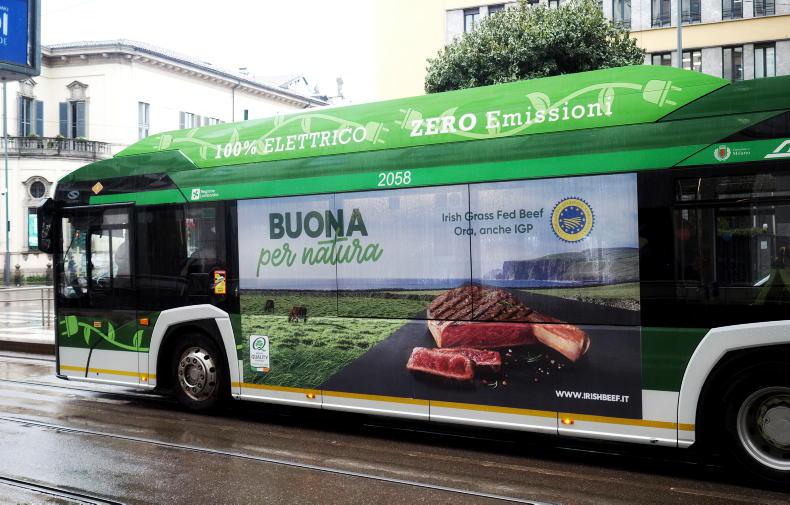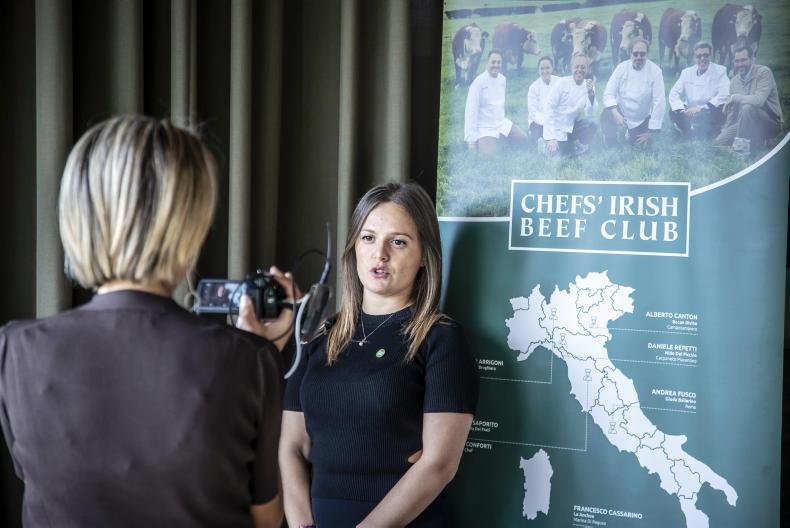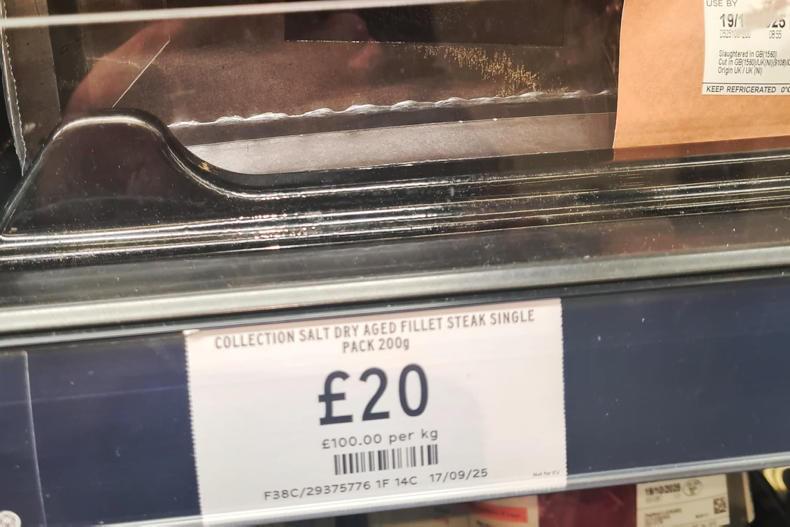Farmgate prices have increased in recent months to what would be considered a more acceptable level for farmers.
Even if prices settle at a higher level than was the case in 2024, suckler-based beef production will remain the poor relation in the livestock sector compared with dairy farming.
A new higher base level for beef prices suits beef producers, but it brings with it a different challenge.
This week, we learned that Irish food price inflation is running at twice the rate of general inflation and higher meat and dairy prices are contributors to this.
Beef sales in Ireland and the UK - our biggest market for beef sales - have been remarkably robust, with some increase over the past year for many categories of beef.
However, in more recent times, supermarkets, catering and hospitality outlets have begun passing the higher cost on and this will test consumer loyalty to the product.
There are several anecdotes about Dublin restaurants removing steak options from menus simply because it has become too expensive. These stories are also doing the rounds in the UK as well.
Organic
The price point for organic has to be higher again in order to compensate for the loss of production.
In a high-value beef market and with incomes squeezed already by food price inflation, securing a further premium becomes more difficult.
Already with sheepmeat, many organically-reared lambs leak into the mainstream supply chain because the price premium isn’t sufficient to maintain an organic processing chain for the entire production.
Farmers have been provided with financial assistance to convert to organic production and has been a success in meeting the targets for increasing farmland in organic production.
While this assists the conversion process, it is for a fixed period and for long-term commercial sustainability, organic production needs a premium in the market place.
PGI
As for the product of geographical indication (PGI), its ambition was to generate a premium for Irish Grass-Fed Beef.
However, given that this has been achieved over recent months outside the PGI structure, means that the priority given to developing the PGI brand is lowered.
It has a presence in the Italian market, but, overall, it remains low key rather than at the forefront of promoting Irish beef in export markets.
The UK and EU are and will remain the main market outlets for Irish beef exports.
However, if we are looking further afield, particularly into Asian markets, the premium market here is very much for grain-fed beef, not grass-fed.

PGI Irish Grass-Fed Beef promotion campaign.
This is usually produced in the US and Australia, particularly for the Japanese and South Korean markets and typically included growth promoting hormones, which are legal in the EU. Ireland has work to do to present the value of grass fed and PGI can be a vehicle to do this.
With beef prices at acceptable levels, there may be a tendency to relax when it comes to the promotion and marketing of the product.
However, in applying the principle of 'fixing the roof on a dry day', we shouldn’t be complacent and look to build our brands when the trade is good, as opposed to scrambling around looking for options when the trade is bad.
Building a sufficient export market for organic beef will always be a challenge, but without a market, it isn’t sustainable in the long term.
As for the PGI, while it can lie dormant, it is best worked on to underpin a premium image for Irish beef in all markets including the UK and EU as they become increasingly open to supplies from around the world.
Read more
Conventional beef prices on par with organic beef
Commitment to organic farming to be showcased at Bloom
Slow first year for PGI beef
Farmgate prices have increased in recent months to what would be considered a more acceptable level for farmers.
Even if prices settle at a higher level than was the case in 2024, suckler-based beef production will remain the poor relation in the livestock sector compared with dairy farming.
A new higher base level for beef prices suits beef producers, but it brings with it a different challenge.
This week, we learned that Irish food price inflation is running at twice the rate of general inflation and higher meat and dairy prices are contributors to this.
Beef sales in Ireland and the UK - our biggest market for beef sales - have been remarkably robust, with some increase over the past year for many categories of beef.
However, in more recent times, supermarkets, catering and hospitality outlets have begun passing the higher cost on and this will test consumer loyalty to the product.
There are several anecdotes about Dublin restaurants removing steak options from menus simply because it has become too expensive. These stories are also doing the rounds in the UK as well.
Organic
The price point for organic has to be higher again in order to compensate for the loss of production.
In a high-value beef market and with incomes squeezed already by food price inflation, securing a further premium becomes more difficult.
Already with sheepmeat, many organically-reared lambs leak into the mainstream supply chain because the price premium isn’t sufficient to maintain an organic processing chain for the entire production.
Farmers have been provided with financial assistance to convert to organic production and has been a success in meeting the targets for increasing farmland in organic production.
While this assists the conversion process, it is for a fixed period and for long-term commercial sustainability, organic production needs a premium in the market place.
PGI
As for the product of geographical indication (PGI), its ambition was to generate a premium for Irish Grass-Fed Beef.
However, given that this has been achieved over recent months outside the PGI structure, means that the priority given to developing the PGI brand is lowered.
It has a presence in the Italian market, but, overall, it remains low key rather than at the forefront of promoting Irish beef in export markets.
The UK and EU are and will remain the main market outlets for Irish beef exports.
However, if we are looking further afield, particularly into Asian markets, the premium market here is very much for grain-fed beef, not grass-fed.

PGI Irish Grass-Fed Beef promotion campaign.
This is usually produced in the US and Australia, particularly for the Japanese and South Korean markets and typically included growth promoting hormones, which are legal in the EU. Ireland has work to do to present the value of grass fed and PGI can be a vehicle to do this.
With beef prices at acceptable levels, there may be a tendency to relax when it comes to the promotion and marketing of the product.
However, in applying the principle of 'fixing the roof on a dry day', we shouldn’t be complacent and look to build our brands when the trade is good, as opposed to scrambling around looking for options when the trade is bad.
Building a sufficient export market for organic beef will always be a challenge, but without a market, it isn’t sustainable in the long term.
As for the PGI, while it can lie dormant, it is best worked on to underpin a premium image for Irish beef in all markets including the UK and EU as they become increasingly open to supplies from around the world.
Read more
Conventional beef prices on par with organic beef
Commitment to organic farming to be showcased at Bloom
Slow first year for PGI beef










SHARING OPTIONS